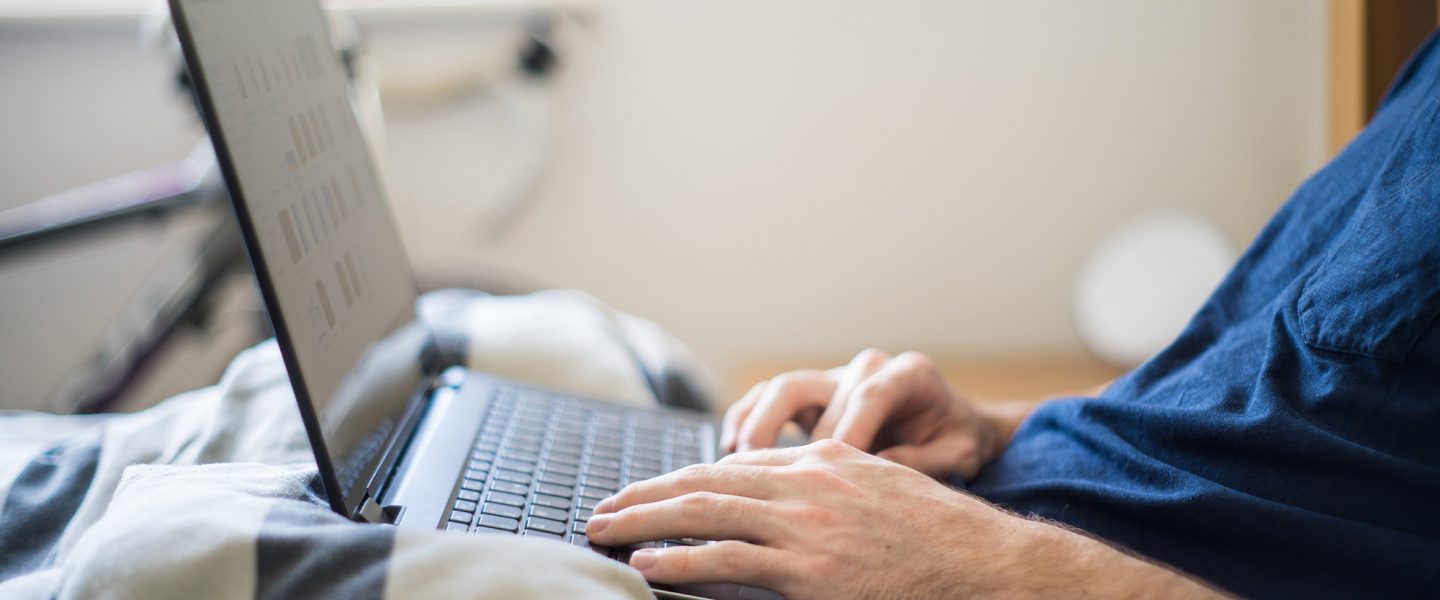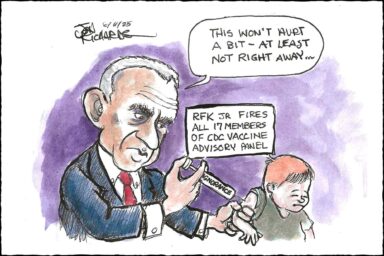A new study offers evidence of what the new normal will be: less grocery delivery, more socialization.
|
Listen To This Story
|
Is It “Post-Pandemic” Yet?
A new study offers a glimpse of what the country looks like as COVID-19 settles into American life. Not surprisingly, Americans are keen to hang on to some pandemic innovations — hello, remote work and curbside pickup! — and ditch other changes such as virtual cocktail parties and telehealth visits.
The study, conducted by The Associated Press-NORC Center for Public Affairs Research and The SCAN Foundation, reveals a country that has become comfortable living with COVID-19, while also confirming that a huge chunk of the population has yet to resume life the way it was pre-pandemic. What emerges from the stats is a recognition that the so-called “new normal” has a different definition for every American.
‘Back to Normal,’ With Caveats
It won’t surprise anyone who’s spent much time in public that passenger numbers through TSA checkpoints are nearly reaching pre-pandemic levels and concert ticket sales are thriving. That certainly jives with the study’s finding that two-thirds of Americans think their lives are somewhat or completely the same as before the pandemic. Most have resumed activities like socializing with friends, family, and neighbors, going to a bar or restaurant, and using public transportation.
Yet, these figures don’t bode well for the current wave of more infectious coronavirus strains. The Centers for Disease Control and Prevention reports that BA.5, and another new subvariant BA.4, are driving up cases across the United States. As of the week of July 17, BA.4 made up 12.9 percent of new cases, and BA.5 81.9 percent.
But less than a quarter of adults are worried about infection. This finding did not surprise NORC Center Senior Research Director Dan Malato.
“We expected that there would be broad resumption of activities like socializing with friends, going out to bars and restaurants, and traveling based on past AP-NORC surveys,” he said.
Win Some, Lose Some
In the past two and a half years since the pandemic began, Americans have seen a lot of changes to daily life: “Zoom” has become a colloquial term, and everyone seems to have perfected their banana bread recipe.
Throughout, we’ve also wondered what new developments would survive the reopening of the world. The study offers some insight.
Among other things, people are in favor of hanging onto remote work and virtual options for community events. Still, respondents feel that some services — such as grocery delivery and virtual events — are less desirable and can be left behind in a “reopened” world.
But one aspect of the pandemic that has remained the same — and will continue to be for the foreseeable future — is the fact that each race experiences it differently.
It’s Still a Different Kind of Pandemic Depending on What Color You Are
Even as most Americans feel that their lives are back to normal, the study found that, while vaccination rate disparities between Black, Hispanic, and white populations have decreased, the pandemic continues to be different for each race when it comes to support for regular testing, mask-wearing, and other indicators that the pandemic is still a cause for concern.

Black and Hispanic populations had been more hesitant to receive the COVID-19 vaccine. When all US adults became eligible to receive the COVID-19 vaccine at the end of April 2021, vaccination rates were highest among Asian and white adults and lower among Hispanic and Black adults. But by the end of November 2021, COVID-19 vaccination coverage was similar for Black, Hispanic, and white adults, and federal vaccination numbers from April 5 show that the gap in receiving the vaccine between white and Black populations significantly decreased. Furthermore, since early 2022, Hispanic booster dose rates have been slightly higher than those of white people.
Still, Black and Hispanic adults are more likely than white adults to consider regular indoor mask wearing as activities resume among respondents in the study.
“Black and Hispanic adults have been disproportionately impacted by the pandemic,” Malato said, “and it makes sense that they would continue to support regular mask wearing and testing for COVID-19 to fully return to public life.”
Moving forward, the AP-NORC Center hopes to continue to track Americans’ attitudes toward the pandemic, Malato added, including how their lives have changed since COVID-19 and their willingness to resume their lives as they were before the pandemic.
This story was written by a member of our Mentor Apprentice Program (MAP). It gives aspiring journalists an opportunity to hone their craft while covering national and international news under the tutelage of seasoned reporters and editors. You can learn more about the MAP and how you can support our efforts to safeguard the future of journalism here.




